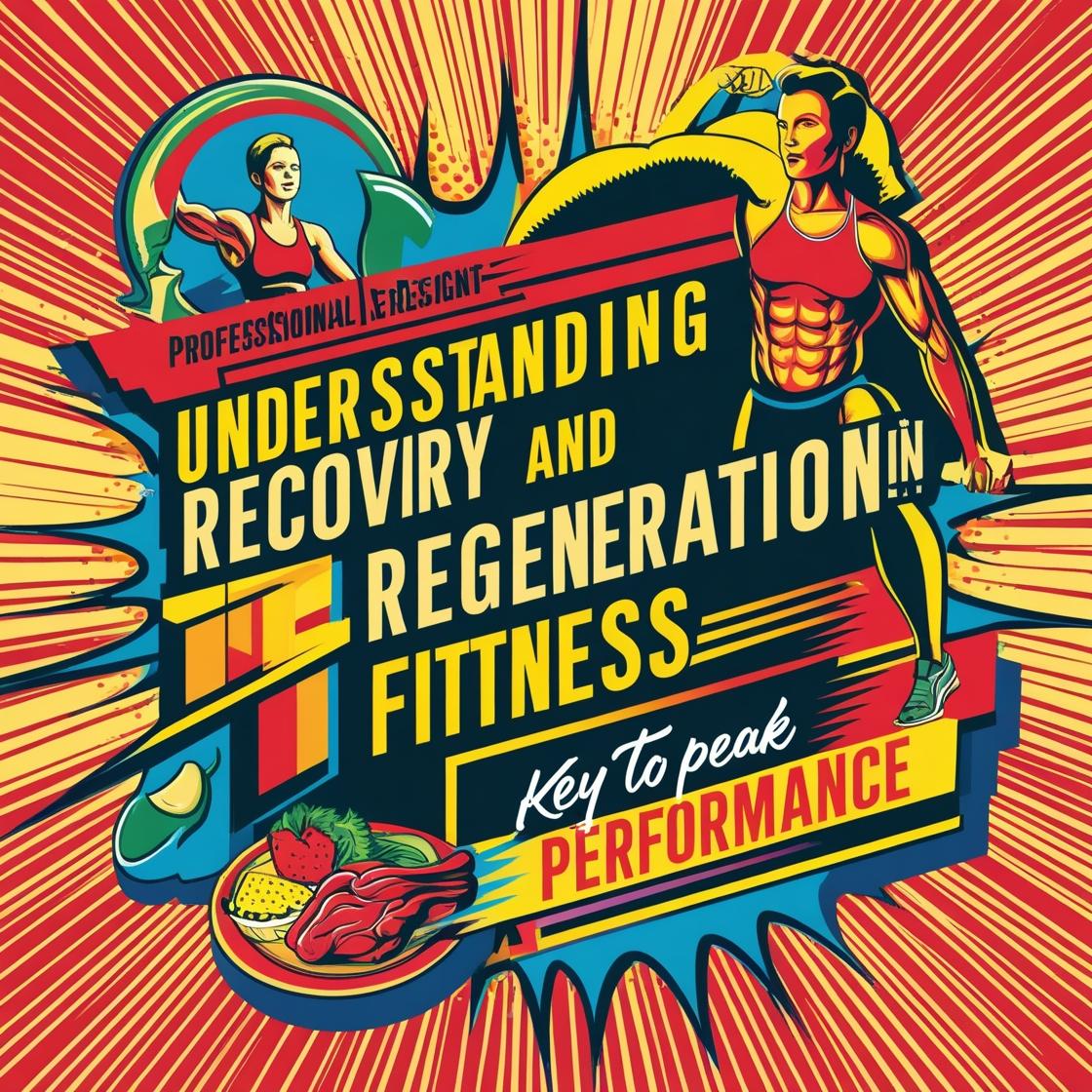Key to Peak Performance

By Daniel - TinyVik1ng on 2025-03-13 05:59:57
Type: recovery-regeneration
When you push your body hard during workouts, your muscles undergo stress and damage. However, it's not during the workout that you build strength, but during the recovery and regeneration period. This phase is where the magic happens. Recovery and regeneration are critical elements in any fitness regimen, as they allow your body to repair, rebuild, and come back stronger than before.
In this blog, we'll take a deep dive into what recovery and regeneration mean, why they’re important, and how you can optimize your recovery for the best results in your fitness journey. We’ll also explore scientific insights, debunk common myths, and provide advanced techniques to help you maximize your recovery.
What Is Recovery and Regeneration in Fitness?
| Term | Definition |
|---|---|
| Recovery | The process your body undergoes after physical activity to repair muscles, joints, and tissues. |
| Regeneration | The rebuilding of damaged tissues to restore full functionality, often leading to stronger muscles and improved performance. |
Both processes work hand-in-hand to ensure that you maintain optimal health and performance. Without proper recovery, your body won’t have the time it needs to heal, which could lead to fatigue, injury, and setbacks.
Why Is Recovery and Regeneration So Important?
| Benefit | Explanation |
|---|---|
| Muscle Repair & Growth | Tiny tears in muscle fibers caused by exercise are repaired during recovery, leading to muscle growth. |
| Injury Prevention | Adequate recovery reduces the risk of overuse injuries like strains, sprains, and stress fractures. |
| Mental Health Benefits | Recovery prevents burnout, fatigue, and mental stress, keeping you motivated and focused. |
| Improved Performance | Recovery replenishes energy stores, repairs muscles, and restores hormonal balance for better performance. |
How to Recover Effectively: Key Strategies
| Strategy | Details |
|---|---|
| Active Recovery | Low-intensity exercises like walking, cycling, swimming, or yoga to improve circulation and reduce soreness. |
| Sleep & Rest | Aim for 7-9 hours of quality sleep nightly. Create a relaxing bedtime routine to enhance sleep quality. |
| Nutrition & Hydration | Focus on protein (muscle repair), carbs (glycogen replenishment), healthy fats (joint health), and hydration (water and electrolytes). |
| Stretching & Foam Rolling | Stretch after workouts to improve flexibility and use foam rollers 2-3 times a week to reduce muscle tightness. |
| Massage & Therapy | Sports massages, cryotherapy, contrast baths, and heat therapy can enhance recovery and reduce inflammation. |
| Supplements | BCAAs, creatine, omega-3s, glutamine, and magnesium can support recovery. Always consult a healthcare professional before use. |
Advanced Recovery Techniques
| Technique | Description |
|---|---|
| Blood Flow Restriction (BFR) | Using bands to restrict blood flow during low-intensity exercise to enhance recovery and growth. |
| Wearable Technology | Devices like WHOOP or Fitbit track sleep, HRV, and recovery metrics for personalized insights. |
| Red Light Therapy | Exposure to red or near-infrared light to reduce inflammation and promote cellular repair. |
| Floatation Therapy | Floating in a sensory deprivation tank to reduce stress, improve sleep, and enhance recovery. |
Signs You’re Not Recovering Enough
| Sign | What It Means |
|---|---|
| Persistent Fatigue | Feeling drained even after a good night’s sleep. |
| Decreased Performance | Struggling to lift the same weight or perform at your usual intensity. |
| Muscle Soreness | Unusual or prolonged soreness that doesn’t subside after a couple of days. |
| Increased Injuries | Experiencing frequent strains, sprains, or joint pain. |
| Mood Swings | Feeling irritable or stressed, which can indicate overtraining. |
Debunking Common Recovery Myths
| Myth | Truth |
|---|---|
| “No Pain, No Gain” | Excessive pain is a sign of overtraining. Recovery is essential for progress. |
| “You Don’t Need Rest Days” | Rest days are crucial for muscle repair and growth. Skipping them can lead to burnout and injury. |
| “More Protein Equals Faster Recovery” | While protein is important, overconsumption won’t speed up recovery. Balance is key. |
Creating a Recovery Plan That Works for You
| Step | Action |
|---|---|
| Assess Your Workouts | Consider the intensity and frequency of your training. More intense sessions may require longer recovery times. |
| Incorporate Variety | Include active recovery days in your weekly routine, focusing on movement and flexibility. |
| Listen to Your Body | Pay attention to how you feel. If you're overly sore, tired, or experiencing pain, take extra time to recover. |
| Schedule Rest | Plan rest days in your workout schedule to prioritize recovery. |
| Track Your Progress | Keep a log of your workouts and recovery strategies. Adjust as needed based on your body’s response. |
Recovery and regeneration are as essential as the workouts themselves. Giving your body the time and resources to repair and regenerate is the key to long-term progress in fitness. By incorporating proper rest, nutrition, hydration, stretching, and recovery techniques into your routine, you’ll set yourself up for success and avoid injury, burnout, or plateaus. Always remember that rest is just as important as the work.
In the end, consistency, recovery, and patience are the cornerstones of any successful fitness journey. Embrace the recovery process, and watch yourself come back stronger than ever!






